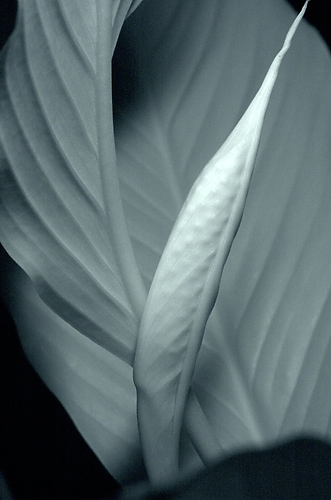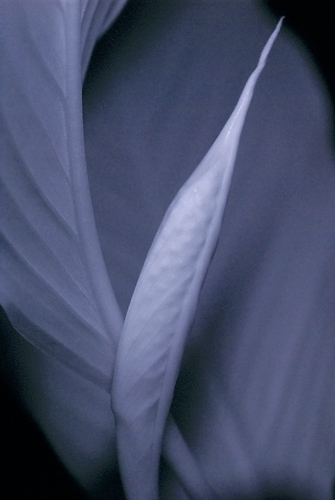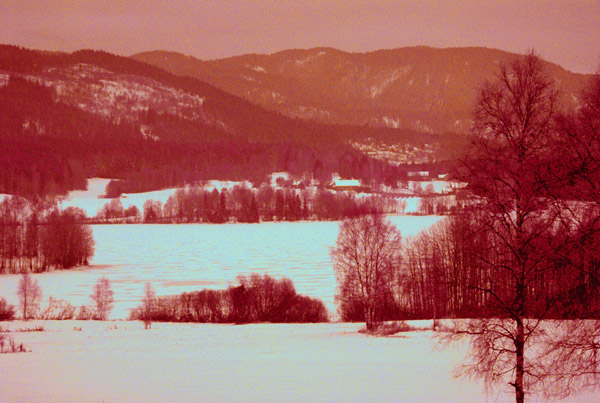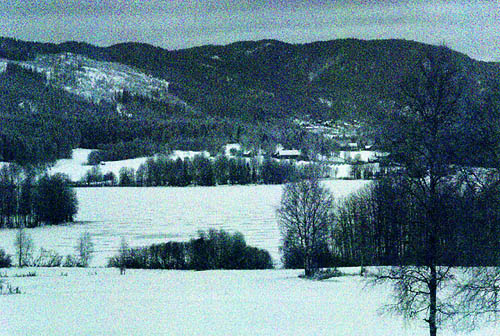| Nikon D200 Digital Camera
Reviewed |
|
|
| by Bjørn
Rørslett |
|
7.
Infrared (IR) photography with D200
One pleasant surprise with
many of the digital cameras is their ability to record useful
imagery outside the visible spectrum. Typically, the sensitivity
to near-IR may be sufficiently high to allow IR photography not
only in bright sunlight, but also under less well illuminated
conditions. This is good news for any experimentally inclined end
user, but bad news for the camera manufacturer. Initially, we
would expect a CCD-based camera such as the D200 to be more
responsive to IR than the CMOS-based models, but is this really
the situation here? Read on to learn more.
The camera designers
expressedly don't want IR to enter their cameras because IR will
reduce perceived sharpness, make skies look washed out or
experience colour shifts, produce blotched facial rendition, and
visually increase the adverse impact of chromatic aberration
(CA). Hence the anti-IR filter in front of the imaging chip
inside the camera, typically seen as a greenish sheen when the
CCD/CMOS chip is exposed to light. The anti-IR filter is combined
with an anti-aliasing (AA) filter in a filter pack, which may or
may not be easily removable.
One of the basic difficulties
you have evaluating a camera for IR (or UV) response is to
establish the amount of photographically active IR (or UV)
present for the subject under the given shooting conditions, when
there is no fixed relationship between visible and invisible
light, so your light meter is pretty much useless. While it is
true that some cameras, for example the D2H, do meter quite well
in IR, you can never rely entirely on this assumption, and it
also frequently breaks when you put on a denser IR filter. So, my
approach is to compare cameras on a relative basis, using the D70
as a reference point both for UV and IR.
Each generation of Nikon
D-series cameras has had its IR sensitivity decreased; or put the
other way, the efficiency of the filter pack has increased. Nikon
D200 is certainly no exception to this general trend. In fact, it
is the least IR-sensitive Nikon DSLR I've ever used. Thus, the
D200 has about 4 EV less IR sensitivity than the D70, when I shot IR test
scenes with each camera set up identically. This means you are
forever tied to using a tripod-mounted camera and additionally,
the ISO setting normally needs a healthy lift to keep shutter
speeds at a manageable duration. I shot all IR images with Dthe
200 set to 800 or 1600 ISO equivalent.
With the Wratten 89B-type
filter I got excessively red images to indicate the red channel
of D200 carried the entire IR response. Under sunny skies, the IR
response of D200 with 89B was down about 12-14 stops compared to
daylight exposure, or some 4 stops down from the D70. This is
perfect from the Nikon engineers' point of view, and simply means
they have done a good job in order to keep the D200 free of
IR-mediated hassles. For a keen IR photographer on the other
hand, this poor response, in conjunction with the odd spectral
balance, implies you should not count on doing general IR work
with the D200. This task is better left to other models such as
the D100, D70, or D2H, all of which have 4-5 stops better IR
response. Or if you are experimentally inclined, get yourself an
old D1 and strip out its internal filter pack to give the camera
a tremendous IR sensitivity (no less than + 14 stops compared to
D200). Please don't get me wrong, IR photography with D200 is not
impossible;, it is impractical since much better
alternatives exist. See also the next paragraph.
Another feature with the IR rendition of
the D200 is the rapidly declining response to the denser, Wratten
87 or 87C, filters. With the D2H or D70, there is just a small
penalty in terms of exposure elongation to pay for the nicer IR
rendition of the virtually black 87C filter. With the D200, as
with the D2X, the use of 87C will cost you no less than approx.
16 stops of increased exposure compared to the daylight baseline.
Moreover, the images I got from the D200 with 89B, 87, or 87C
filtration tended to be slightly unsharp and in some cases having
excessive graininess and line noise, again in stark contrast to
the nice and etchedly sharp IR images you can lift off the D2H or
D70.
Infrared rendition of Peace Lily (Spathihyllum
sp., Araceae)
D200 vs D70
|
 |
 |
D70
UV-Nikkor 105 mm f/4.5 @ f/16, 800 ISO equivalency,
SB-140 flash with SW-5IR filter |
D200
UV-Nikkor 105 mm f/4.5 @ f/5.6, 1600 ISO equivalency,
SB-140 flash with SW-5IR filter |
The IR image taken with the D70 is
much sharper despite the greater resolution of the D200.
Also, note the much improved IR sensitivity of D70
compared to the D200, in this case at least 4 stops. An
SB-140 flash device outputs a very healthy amount of IR,
in fact much more enriched in IR than even found in
direct sunlight
|
| Infrared Landscape - I 
D200,
UV-Nikkor 105 mm f/4.5 lens, Wratten 89B filter on lens
12 sec at f/5.6 @ 1600 ISO
The weaker 89B (gel) filter shows
that IR response predominantly occurs in the red channel.
I've tried to balance the image towards less aggressively
red colours. Overall, IR shows very limited potential
with this camera
|
| |
Infrared Landscape - II

D200, UV-Nikkor 105
mm f/4.5 lens, Wratten 87C filter on lens.
120 sec exposure at
f/11 @ 1600 ISO equivalency
Note the rather
excessive image noise here. This perhaps is OK if you
want a "dirty" look, but I for one could well
do without this kind of noisiness
|
You should not do IR with the D200. Simple message, simple remedy: Just
don't do it. The camera isn't up to the
task. There are so much more satisfying approaches to digital IR
than those available with D200. On the other hand, the low
sensitivity to IR implies you get less problems with skin tones,
which are unduly susceptible to excessive IR. So one man's loss
is another man's gain.



